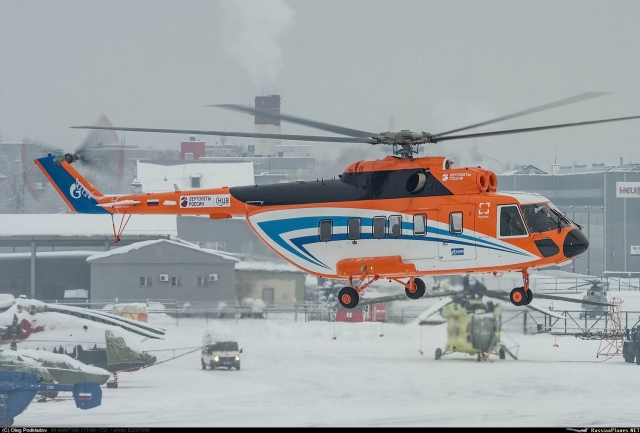On 14 December 2021, the first flight prototype of the new Mil Mi-171A3 multipurpose helicopter has begun flight tests. The first hover flight lasted 15 minutes and proceeded normally, with all systems operating stably.
During the flight, the crew consisting of senior test pilot Alexander Klimov (awarded Hero of Russia) and test pilot Vladimir Kutanin (awarded Order of Courage) performed a series of vertical maneuvers, turns and movements of the helicopter in all directions at different speeds.
The new helicopter is primarily designed for offshore operations and maintenance of offshore oil and gas platforms and as such fully complies with IOGP (International Association of Oil and Gas Producers) standards. The Mi-171A3 meets the increased safety requirements for all-weather operations over the water surface in a wide range of climatic conditions, including maritime, tropical and cold climates, in the ambient temperature range from -50°C to +50°C. The onboard equipment of the helicopter provides automatic and manual control of the helicopter at all stages of flight, from takeoff to landing, with the possibility of automatic piloting along the established air routes and/or in unregulated airspace without ground radio navigation support. The maximum take-off weight is 13 tons, the number of passengers carried is up to 24 people, and the maximum flight range is slightly over 1,000 km.
The Mi-171A3 has been under development since 2018 with the Russian Helicopters holding company of the Rostec State Corporation. It is the first Russian helicopter type which was fully designed digitally, as a product of a broad industrial cooperation of established centers of excellence within the Russian Helicopters holding.
The KVZ Helicopter Plant in Kazan (Tatarstan) is responsible for the production of the cabin floor and the fuel system, including the integral fuel tanks of the Mi-38 helicopter produced there. The OAO AAK Progress plant in Arseneyev in the Russian Far East is responsible for the production of the front, side panels and stern of the fuselage, as the Progress plant has extensive experience in the production of large composites obtained from the Ka-52 attack helicopter program. The dorsal fuselage and tail beam of the Mi-171A3 are manufactured at the UUAZ Aerospace plant in Ulan-Ude, Buryatia in the south-central region of Russian Siberia, where the final assembly and installation of the onboard systems takes place.
Rostec hopes to meet the demand from both domestic and foreign companies active in the fuel and energy sector and estimates the market size for such offshore helicopters at around 100 aircraft by 2035. In the future, the type is to be produced in a number of versions, including military transport, maritime patrol and search and rescue.
In July 2021, Scramble Magazine reported on the presentation of the Mi-171 offshore version at the MAKS-2021 International Aviation and Space Show.
Photo by Oleg Podkladov (via RussianPlanes.net)


